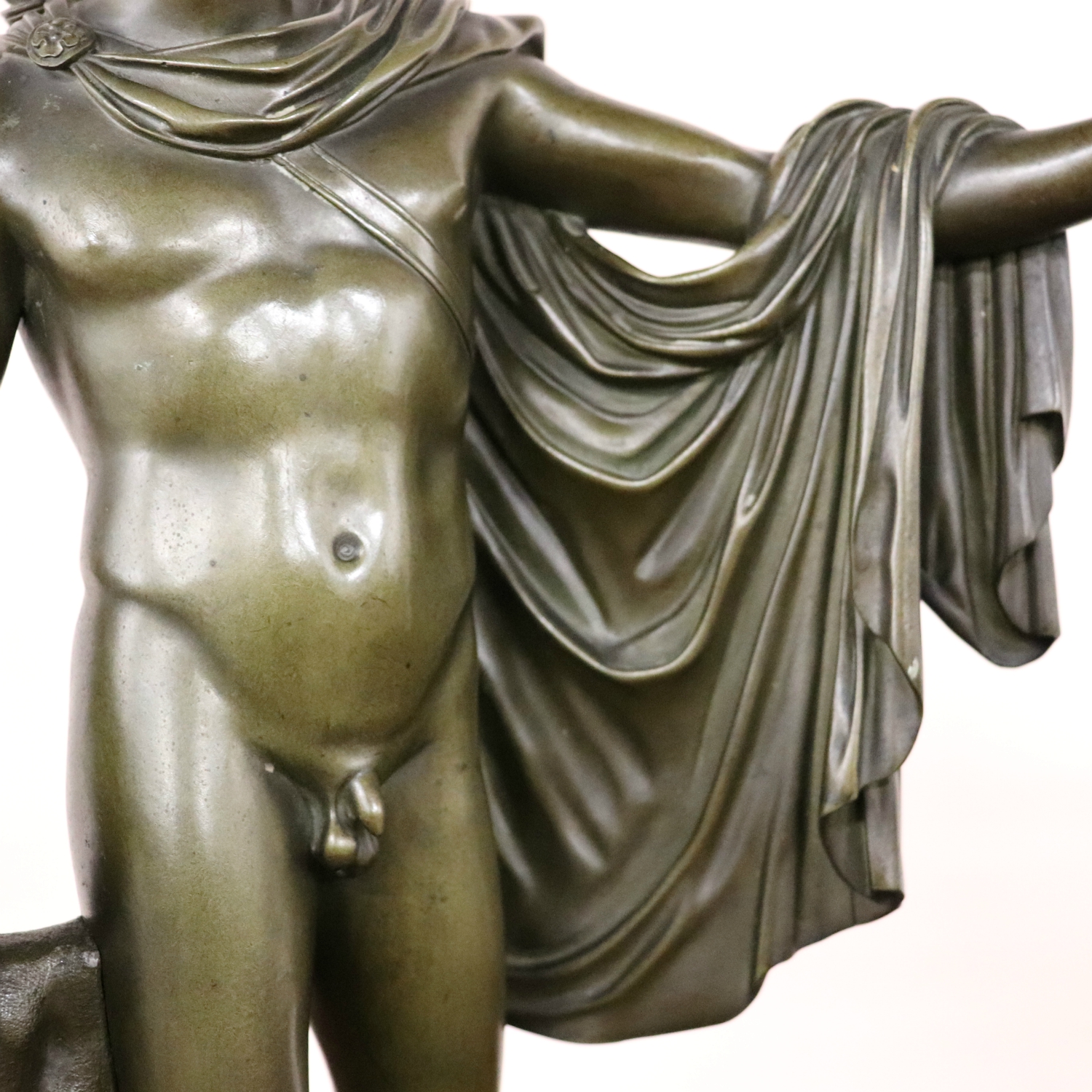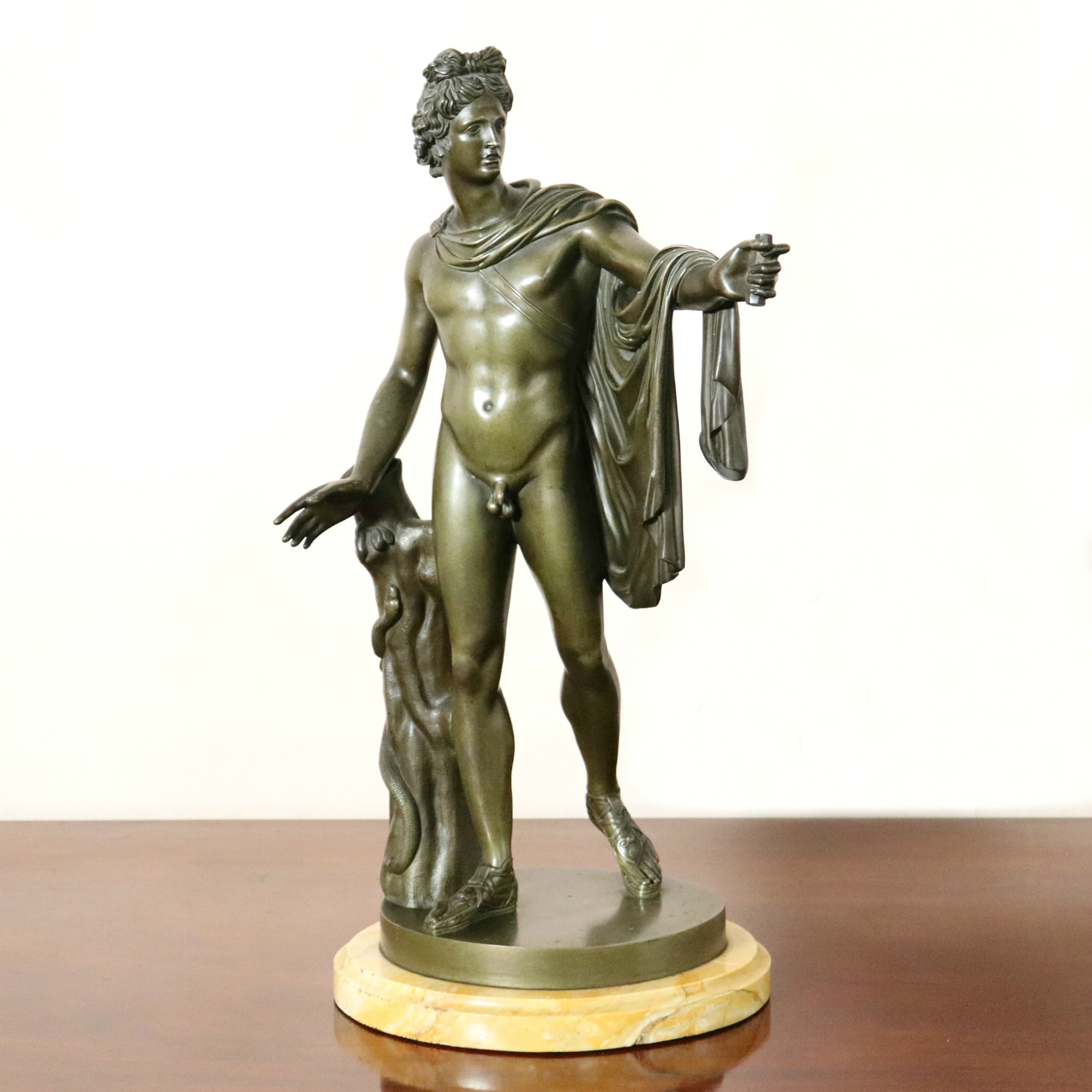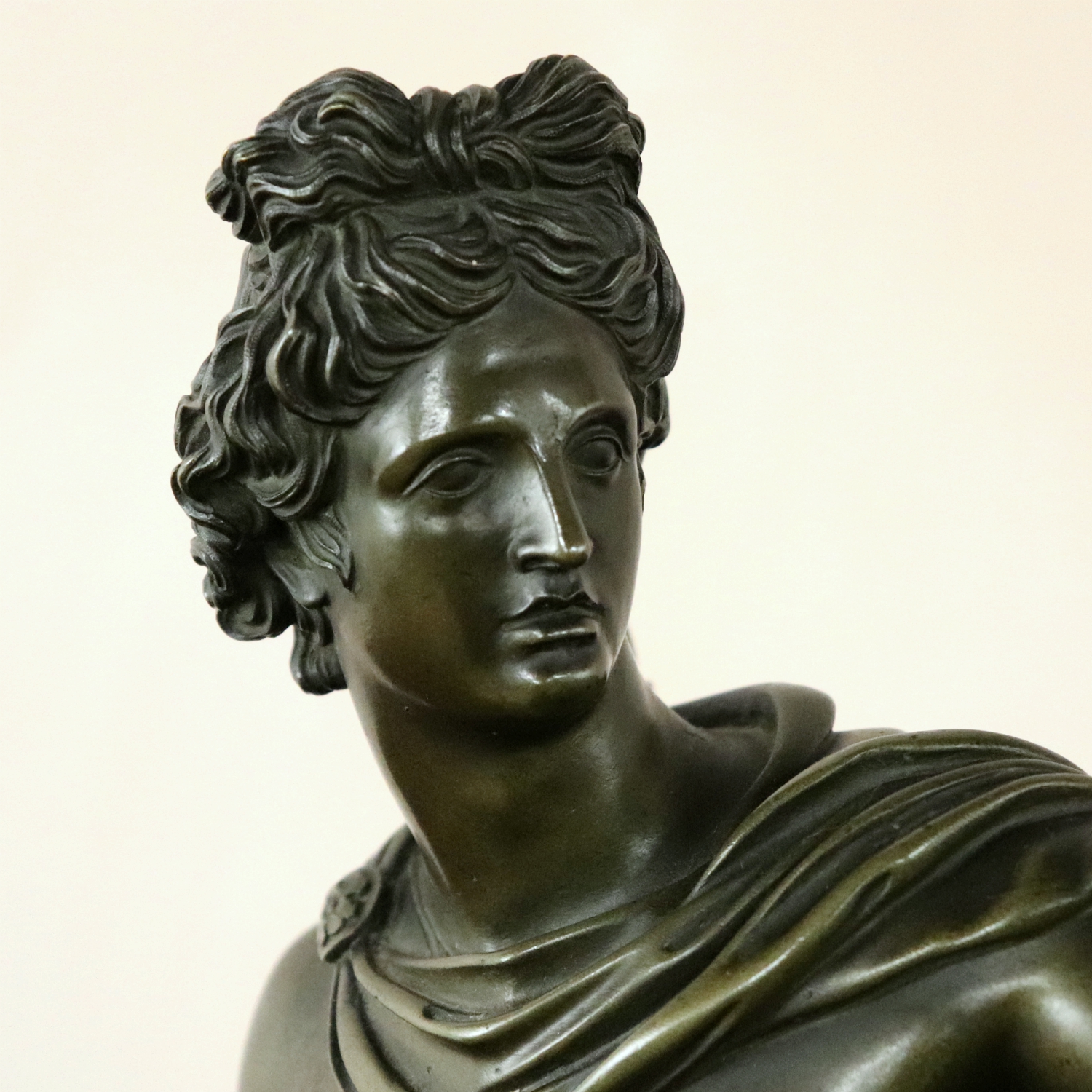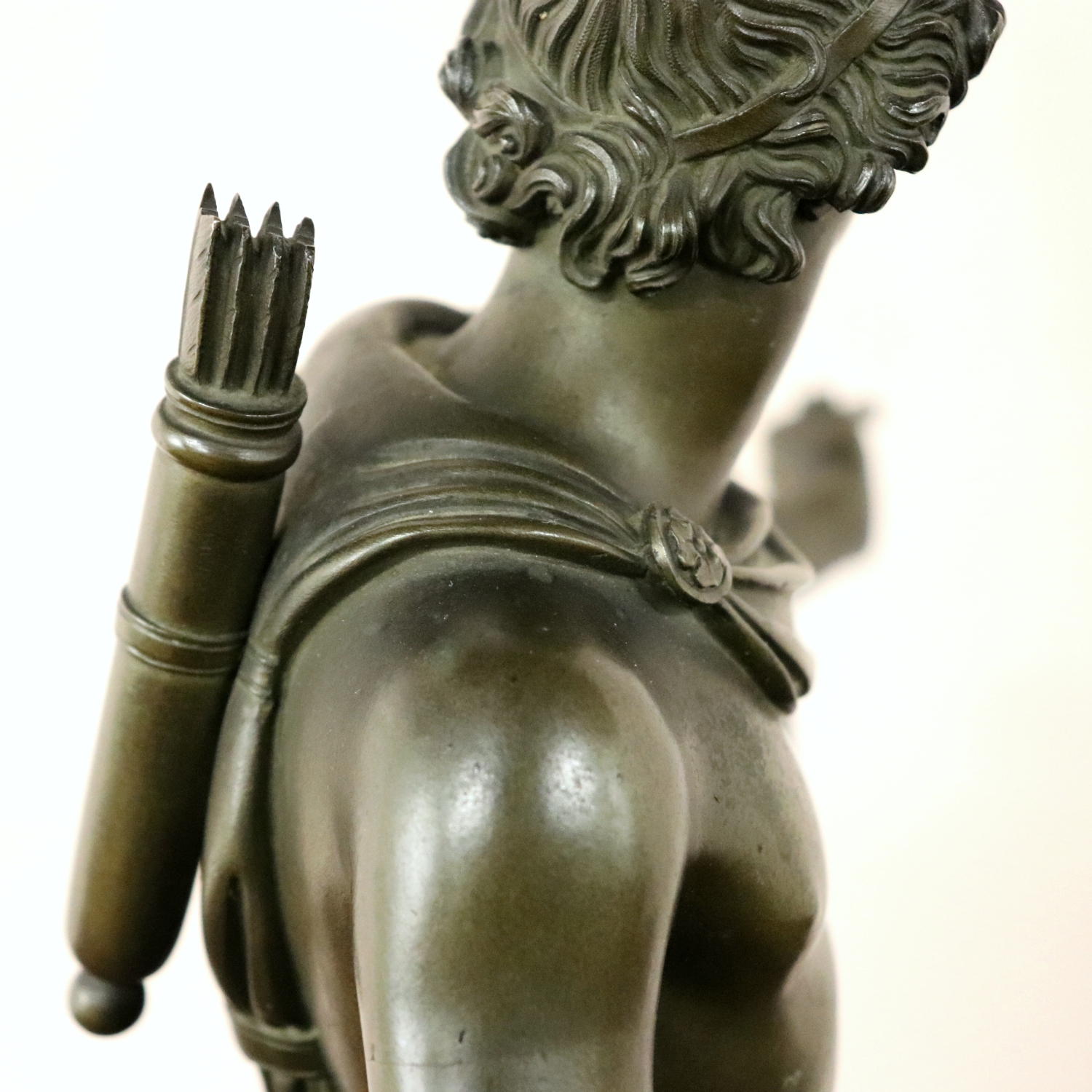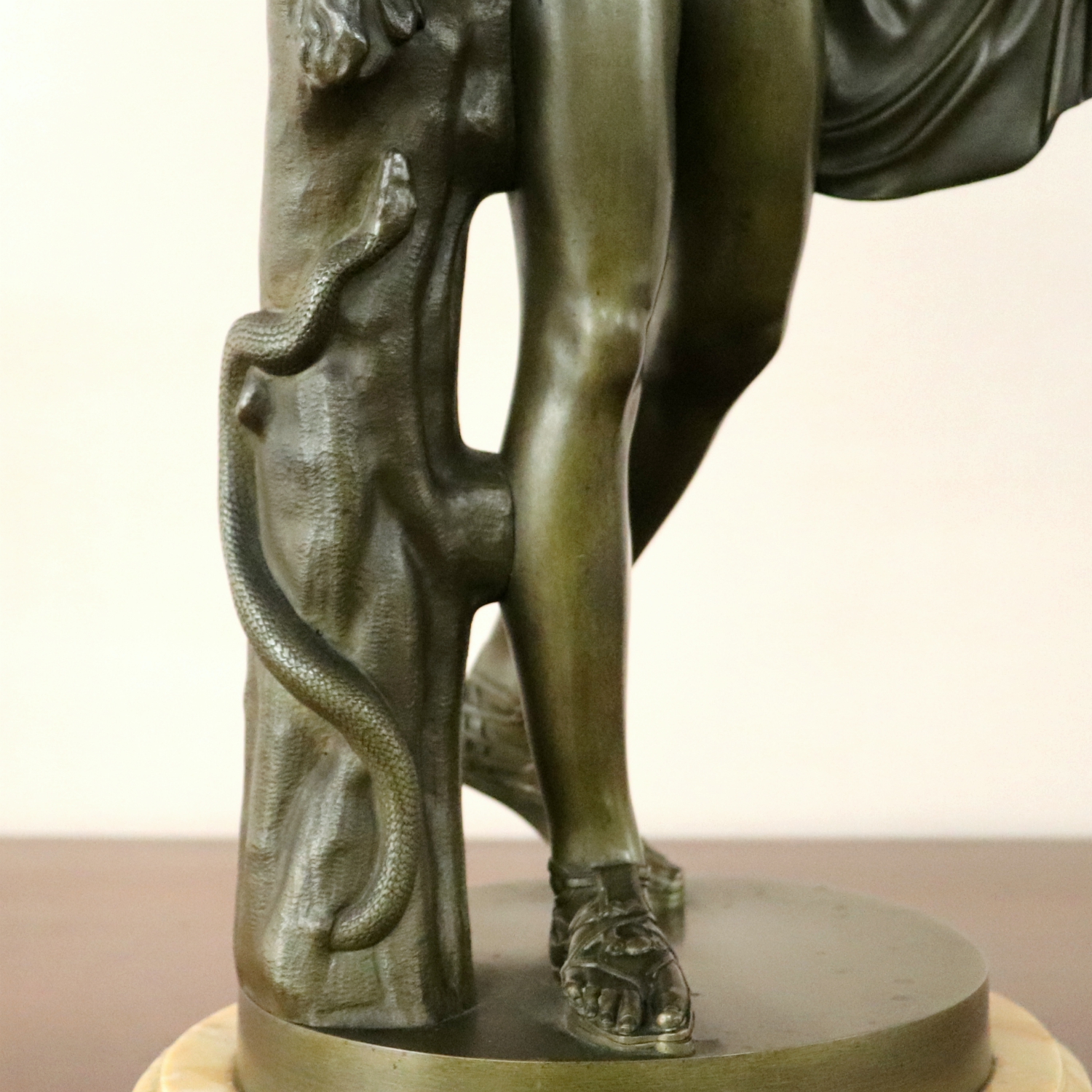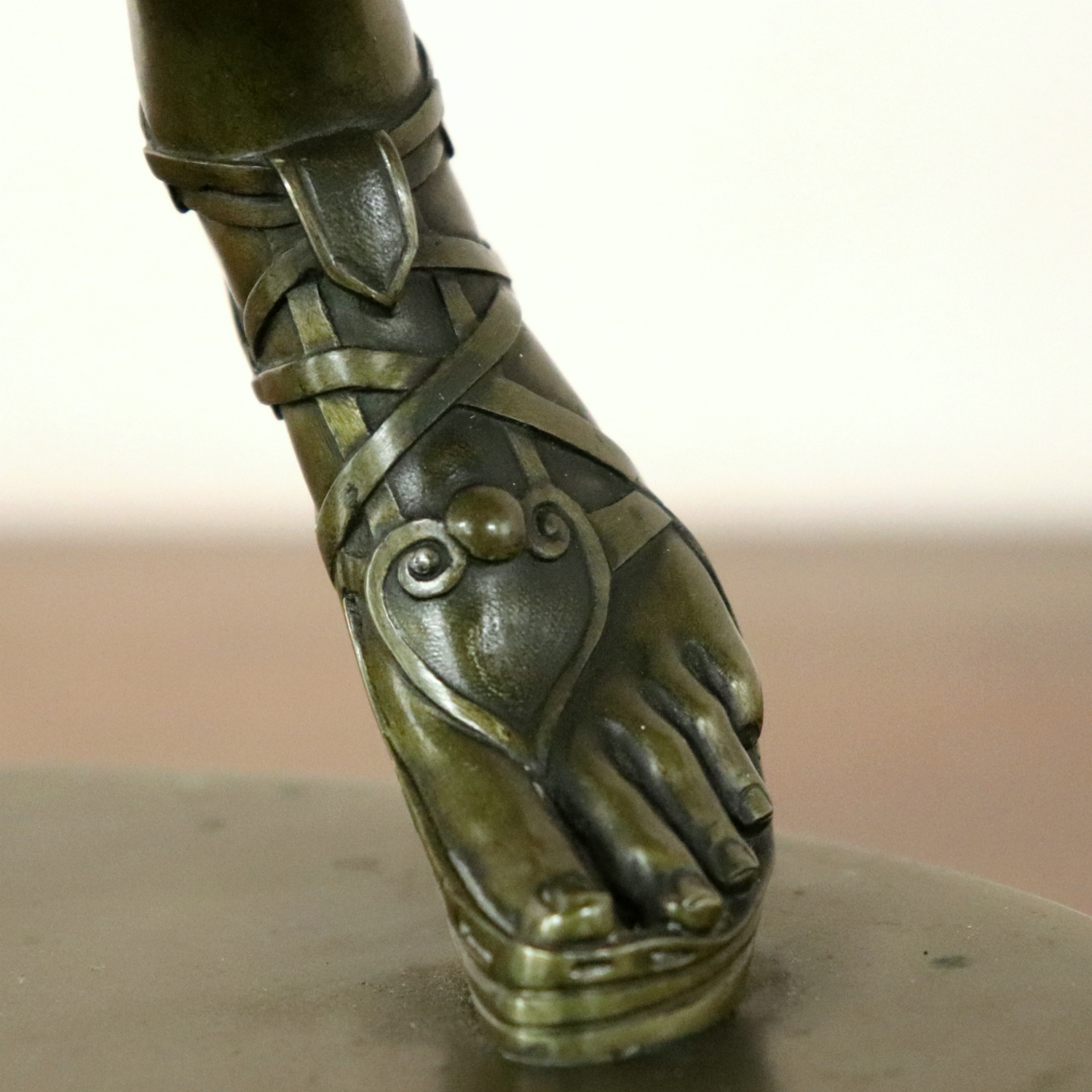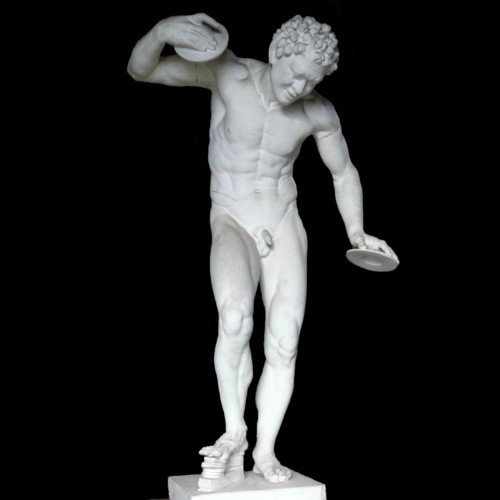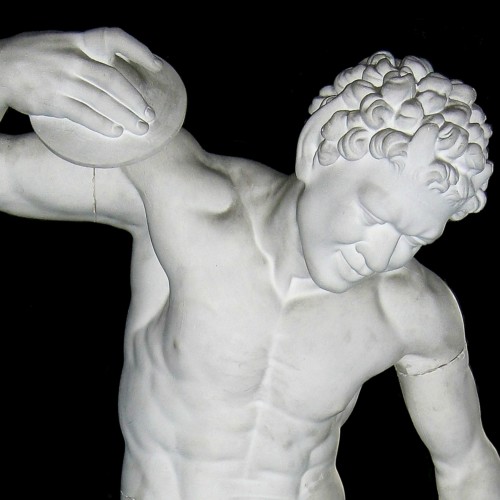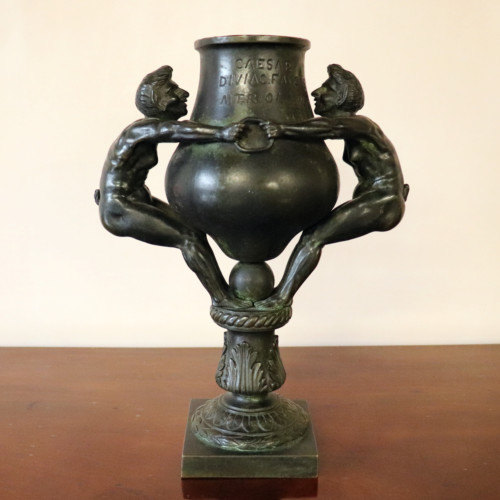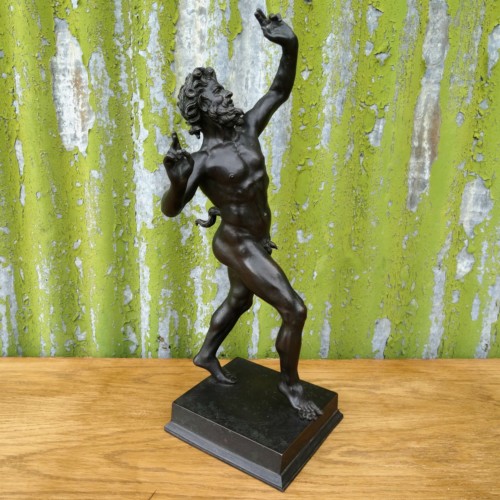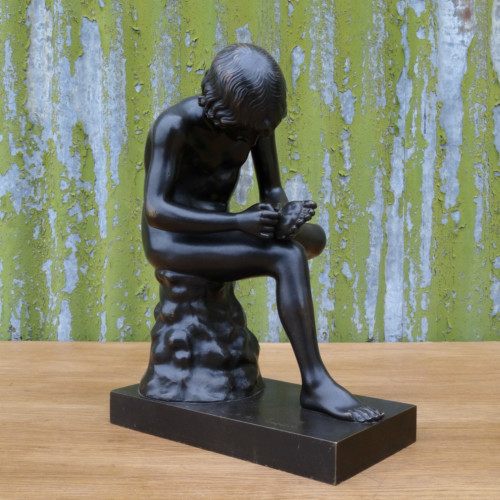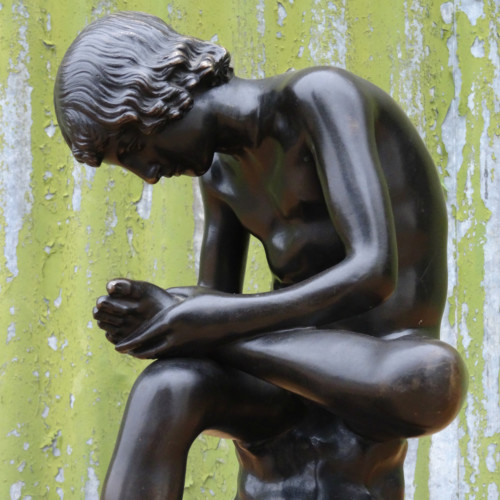A large Grand Tour patinated bronze Apollo Belvedere, after the Antique, attributed to Benedetto Boschetti, Rome, Italy, circa 1850, on original Sienna marble base, in good untouched condition.
The Apollo Belvedere or Pythian Apollo was considered by neoclassicists, from the 18th century, to be the greatest ancient sculpture. It is thought to be an original Roman re-creation dating to circa 120-140, was discovered in central Italy in the 15th century and was put on display in the Vatican in 1511, where it remains.
The workshops of Benedetto Boschetti (circa 1820-1879) based at 74 via Condotti, Rome, were renowned for their exceptional quality works in bronze and marble, after the antique, produced to satisfy the academic and sophisticated tastes of young Englishmen on the Grand Tour. They were awarded a medal at the Great Exhibition of 1851.

